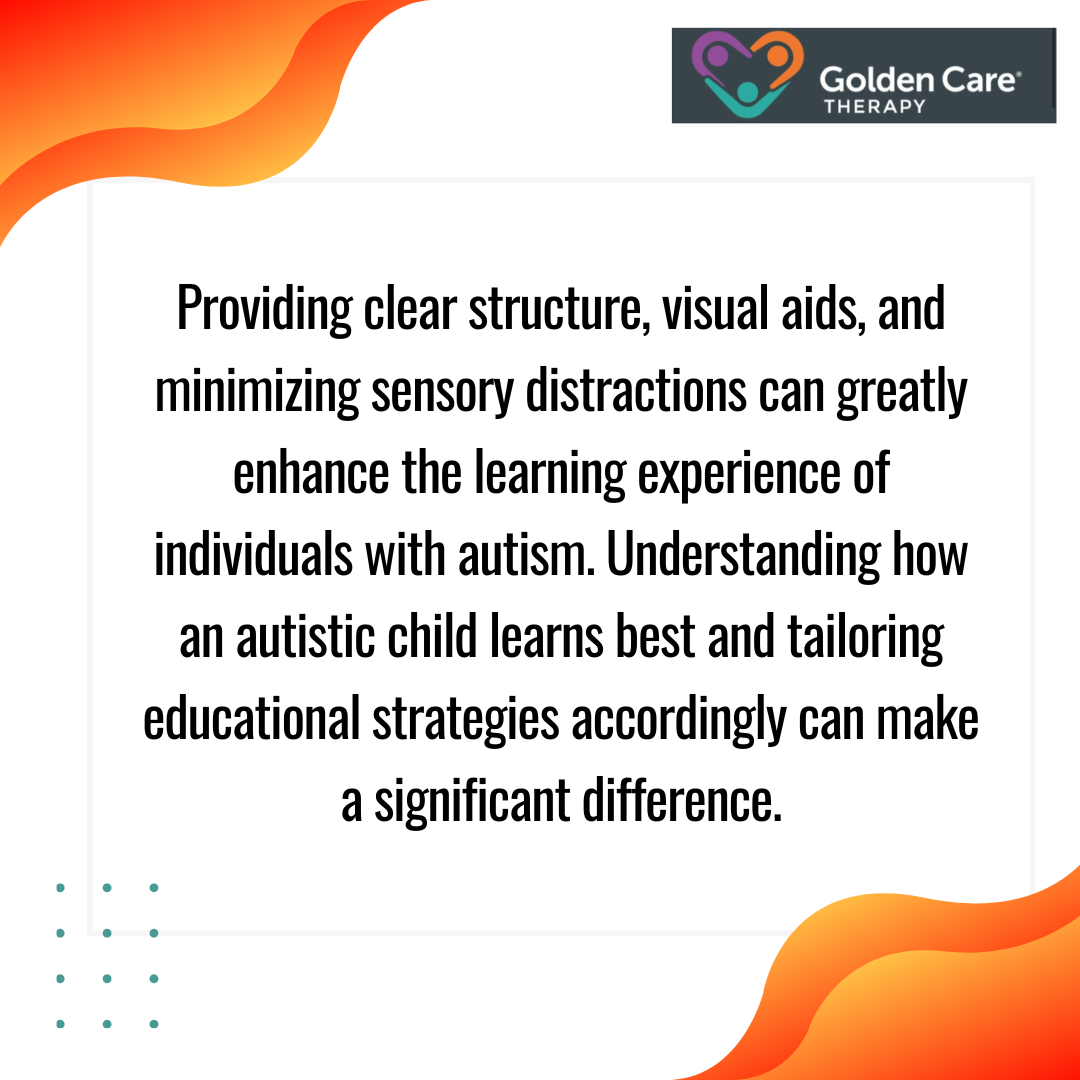
Table of Contents
When it comes to understanding the relationship between autism and learning, it’s important to differentiate between autism spectrum disorders (ASD) and learning disabilities. While some individuals with autism may also have learning disabilities, it’s essential to recognize that they are distinct conditions. Learning disabilities refer to difficulties in specific academic areas, such as reading, writing, or math, despite average or above-average intelligence. On the other hand, autism primarily affects social interaction, communication skills, and behavior.
Differentiating Factors
Autism and learning disabilities have different characteristics and impacts on individuals. Autism spectrum disorders primarily manifest as challenges in social interaction and communication. Individuals with autism may struggle with understanding and using nonverbal cues, engaging in reciprocal conversations, and developing meaningful relationships. They may also exhibit repetitive behaviors, restricted interests, and sensory sensitivities. In contrast, learning disabilities are related to specific academic skills, such as reading, writing, or math, which can be challenging despite average or above-average intelligence.
Impact on Individuals
The impact of autism on learning is multifaceted. Autistic individuals may have unique learning styles, strengths, and challenges. For example, some individuals with autism may excel in visual thinking and have a strong attention to detail, while others may struggle with executive functioning skills, such as organizing tasks and managing time. Sensory sensitivities can also affect the learning experience for individuals with autism, as they may be more sensitive to sounds, lights, textures, or other sensory stimuli in their environment.
It’s important to note that some challenges associated with autism, such as the need for a rigid schedule or difficulty with flexibility, can directly influence the learning process and potentially overlap with learning disabilities. Each individual with autism is unique, and their learning needs should be addressed through personalized approaches.
Challenges Faced by Autistic Learners
Autistic learners face unique challenges that can impact their learning experiences. Two significant areas of difficulty for individuals with autism are sensory sensitivities and attention and organization.
Sensory Sensitivities
One of the common challenges faced by autistic learners is sensory sensitivities. Individuals with autism may have heightened or reduced sensitivity to sensory stimuli, such as sounds, lights, textures, or smells. This heightened sensory perception can lead to discomfort, anxiety, or difficulty focusing in environments with excessive sensory input.
To support autistic learners with sensory sensitivities, it is important to create a learning environment that considers their sensory needs. This can include providing a quiet space for breaks, using soft lighting or natural light, minimizing background noise, and allowing the use of sensory tools like fidget toys or noise-canceling headphones. By reducing sensory overload, individuals with autism can better engage in their learning experiences.
Attention and Organization
Attention and organization can be areas of challenge for autistic learners. Difficulties with attention may manifest as being easily distracted or having trouble staying focused on tasks. Organizational challenges can include difficulties with planning, time management, and task completion. These difficulties can impact academic performance and the ability to follow instructions.
Supporting autistic learners with attention and organization involves implementing strategies to promote focus and organization. Visual aids, such as schedules, checklists, and visual timers, can help individuals understand and manage their time effectively. Breaking tasks into smaller, more manageable steps can also facilitate organization and task completion. Additionally, providing clear and concise instructions, along with visual or written prompts, can aid in maintaining attention and understanding.
Understanding the specific needs of autistic individuals and providing personalized approaches can definitely help create an inclusive and conducive learning environment.
Supporting Autistic Students in Learning
When it comes to supporting autistic students in their learning journey, personalized approaches and creating a supportive environment are key factors in promoting their success. It’s crucial to understand and cater to their individual needs to help unlock their potential and provide them with the tools they need to thrive.
Personalized Approaches
Autistic students learn best through personalized approaches that cater to their individual needs and strengths. This means recognizing that each student is unique and tailoring educational strategies accordingly. Some strategies that can be effective include:
- Providing clear structure: Establishing a predictable routine and clearly outlining expectations can help autistic students feel more comfortable and confident in their learning environment. This can be achieved through visual schedules, checklists, and other organizational tools.
- Utilizing visual aids: Visual aids, such as charts, diagrams, and pictures, can enhance understanding and facilitate communication for students with autism. Visual supports can be used to illustrate concepts, reinforce instructions, and promote independence in learning.
- Minimizing sensory distractions: Sensory sensitivities are common among individuals with autism. Creating a calm and sensory-friendly learning environment can help minimize distractions and support focus. This can involve reducing auditory and visual stimuli, providing noise-cancelling headphones, or offering alternative seating options.
Creating a Supportive Environment
In addition to personalized approaches, creating a supportive environment is crucial for the academic and social development of autistic students. Here are some ways to foster a supportive learning environment:
- Embrace their learning needs: Recognize and embrace the unique learning needs of autistic students. This may involve advocating for appropriate accommodations and individualized education plans (IEPs) to ensure their needs are met. Collaboration with teachers, therapists, and other professionals is essential in developing effective support strategies.
- Provide positive reinforcement: Celebrate the achievements and progress of autistic students. Positive reinforcement can go a long way in boosting their self-esteem and motivation. Recognize their strengths, efforts, and contributions to create a positive and inclusive classroom environment.
- Foster social connections: Encourage social interactions and peer relationships among autistic students and their neurotypical peers. This can be accomplished through structured social skills activities, group projects, and inclusive classroom practices. Building an inclusive classroom community promotes acceptance, empathy, and understanding.
It is important to remember that each student is unique, and what works for one may not work for another. Seeking professional assistance and collaborating with parents, caregivers, and the broader educational team is crucial in providing the necessary support and ensuring the success of autistic students in their academic endeavors.
Addressing Unique Learning Needs
Considering their executive functioning skills and implementing tailored educational strategies are essential. Educators and caregivers should strive to create an environment that fosters optimal learning and development.
Executive Functioning Skills
Kids with Autism Spectrum Disorder (ASD) may experience difficulties with executive functioning skills, which encompass a range of cognitive processes. These skills include planning, focusing, remembering instructions, and multitasking. Challenges in these areas can impact a child’s ability to follow instructions, stay focused on tasks, and effectively manage their time.
To support individuals with autism in developing their executive functioning skills, it is crucial to provide structure, consistency, and explicit instruction. Breaking down tasks into smaller, manageable steps can help them better understand and complete assignments.
Tailored Educational Strategies
Children with autism often have unique learning needs that require a more personalized approach to education. They may benefit from alternative teaching methods, hands-on activities, and visual aids to enhance their understanding and engagement. Smaller class sizes and individualized attention can also greatly support their learning experience.
By incorporating a variety of teaching strategies, educators can cater to the diverse strengths and abilities of autistic learners. For example, providing clear and concise instructions, using visual supports, and minimizing sensory distractions can enhance comprehension and focus. Additionally, incorporating regular brain and physical exercises can help develop critical thinking skills, mindfulness, and self-regulation, contributing to academic success.
By addressing the unique learning needs of individuals with autism through targeted interventions and personalized approaches, we can create an inclusive and supportive learning environment where they can thrive academically and reach their full potential.
Role of Parents and Caregivers
One of the most important responsibilities of parents and caregivers is to understand the unique needs of their child with autism. While Autism Spectrum Disorder is not classified as a learning disability, it can influence how a child learns and interacts with the world. Children with ASD have unique strengths and abilities, and it’s essential to identify and nurture these qualities.
To better support their child’s learning, parents and caregivers can:
- Educate themselves about autism and how it affects learning. Understanding how autism affects learning can provide valuable insights into the challenges and strengths of individuals with ASD.
- Observe and communicate with their child to recognize their preferred learning style and areas where they may need additional support.
- Collaborate with teachers and professionals who specialize in autism to gain further knowledge and strategies to support their child’s learning.
Furthermore, celebrating achievements, no matter how big or small, is an essential aspect of supporting individuals with autism in their learning journey. Recognizing and acknowledging achievements can boost self-confidence and motivation, creating a positive learning environment.
Parents and caregivers can celebrate achievements by:
- Praising their child’s efforts and progress. Positive reinforcement can have a significant impact on building self-esteem and encouraging continued growth.
- Setting realistic goals and celebrating milestones along the way. Breaking down larger tasks into smaller, achievable goals allows for a sense of accomplishment at each step.
- Encouraging and supporting their child’s interests and passions. By nurturing their child’s unique talents, parents and caregivers can help build a sense of purpose and confidence.
By focusing on strengths and celebrating achievements, parents and caregivers can empower their child with autism and create a positive and supportive learning environment. It’s important to embrace their learning needs, seek professional assistance when necessary, and provide a nurturing and inclusive environment that encourages exploration, growth, and success.
Sources:
https://www.autismparentingmagazine.com/learning-difficulties-autistic-students-face/
https://www.england.nhs.uk/wp-content/uploads/2020/01/Learning-disability-and-autism.pdf
https://getgoally.com/blog/is-autism-a-learning-disability/
- Autism Routine Disruption in Adults: Coping Tips - July 16, 2024
- Autism and Obsession: An Overview - July 16, 2024
- Autism and Taking Clothes Off: Management Tips - July 16, 2024




